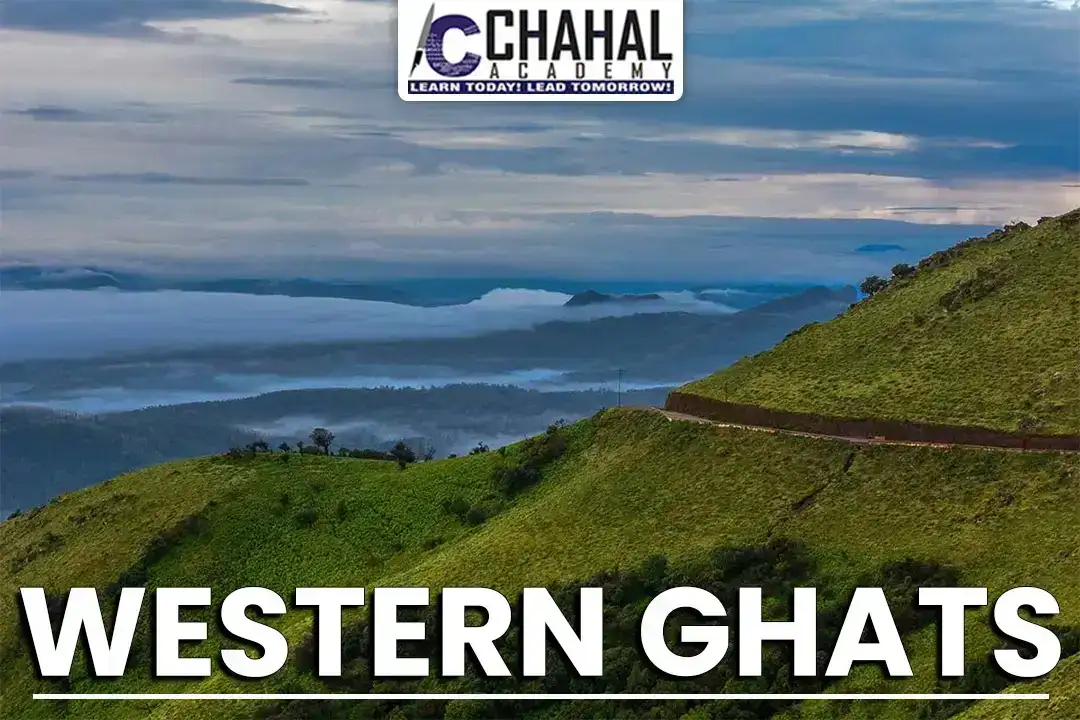Difference Between Eastern Ghats and Western Ghats UPSC CSE

Whatsapp 88106-52225 For Details

Get Free IAS Booklet
Get Free IAS Booklet
The Western Ghats, spanning 1,600 kilometers along India's western coast, are a UNESCO World Heritage Site covering 140,000 square kilometers. Older than the Himalayas, they boast diverse ecosystems and serve as one of the world's biodiversity hotspots. Notable for inducing orographic rainfall and hosting endemic species, they're vital for regional climate patterns and cultural heritage. Despite their ecological significance, the Western Ghats face threats like extractive activities and habitat degradation, sparking controversy over conservation measures. Recent draft notifications propose stringent regulations, yet face opposition from states like Karnataka, citing potential livelihood impacts. It's crucial to balance conservation with sustainable development to safeguard the Western Ghats' unparalleled biodiversity for future generations.
The Western Ghats traverse through six states along India's western coast: Gujarat, Maharashtra, Goa, Karnataka, Kerala, and Tamil Nadu.
The Western Ghats boast diverse ecosystems and endemic species, earning recognition as one of the world's biodiversity hotspots.
The Western Ghats, a UNESCO World Heritage Site, sprawl along India's western coast, spanning 1,600 kilometers and covering 140,000 square kilometers. These ancient mountains, older than the Himalayas, have shaped the region's geography and climate. With diverse ecosystems including tropical forests and wetlands, they are recognized as one of the world's eight biodiversity hotspots.
The Western Ghats constitute a significant geological landform of peninsular India. These encompass an ecologically-rich strip along the west coast, belonging to the six Western coastal states of Gujarat,Maharashtra, Goa, Karnataka, Kerala, Tamil Nadu.
| Features | Western Ghats | Eastern Ghats |
|---|---|---|
| Geographical location | Western Ghats is a continuous range runs from Gujarat to Tamilnadu. | Eastern Ghats is a discontinuous range runs from Odisha to Tamilnadu in which gaps are created by by rivers like the Godavari, Mahanadi, and Krishna. |
| Width | 50 to 80 kilometers | 100 to 200 Kilometers |
| Elevation | Higher in elevation ( Height ranges between 1000 to 1600 meters) | Lower in elevation ( Height ranges between 300 to 900 meters) |
| Highest peak | Anamudi peak (2695 meters) | Jindhagada Peak (1,690 meters) |
| Climate | Receives heavy rainfall on the western slopes. The western side of the Western Ghats is green while the Eastern side is drier. | Receive less rainfall comparatively. The climate of Eastern Ghats is drier than the Western Ghats |
| Biodiversity | Western Ghats region is rich in biodiversity. It is recognized as one of the world's eight "hottest hotspots" of biological diversity. Various endemic plant and animal species are found in this area. | Eastern Ghats is less rich in biodiversity with fewer endemic species as compared to the Western Ghats due to its drier climate. |
| Soil and crops | Laterite soil is found in this region which is suitable for plantation crops like tea, coffee, and spices. | Soils in this region varies from red to lateritic to black soil. It supports drier crops like pulses, millets and irrigation based farming. |
The most recent draft notification by MoEFCC regarding Ecologically Sensitive Areas (ESA) in the Western Ghats in 2022 includes following provisions:
The states, particularly Karnataka, are opposing the draft notification on Ecologically Sensitive Areas (ESA) in the Western Ghats. Karnataka argues that the implementation of the notification will negatively impact the livelihoods of local communities.
The Western Ghats stand as a testament to the incredible biodiversity and natural beauty of India. As custodians of this ecological treasure, it is imperative that we work towards sustainable development practices and conservation efforts to ensure that future generations can continue to marvel at the wonders of the Western Ghats.
Book your Free Class
Book your Free Class
